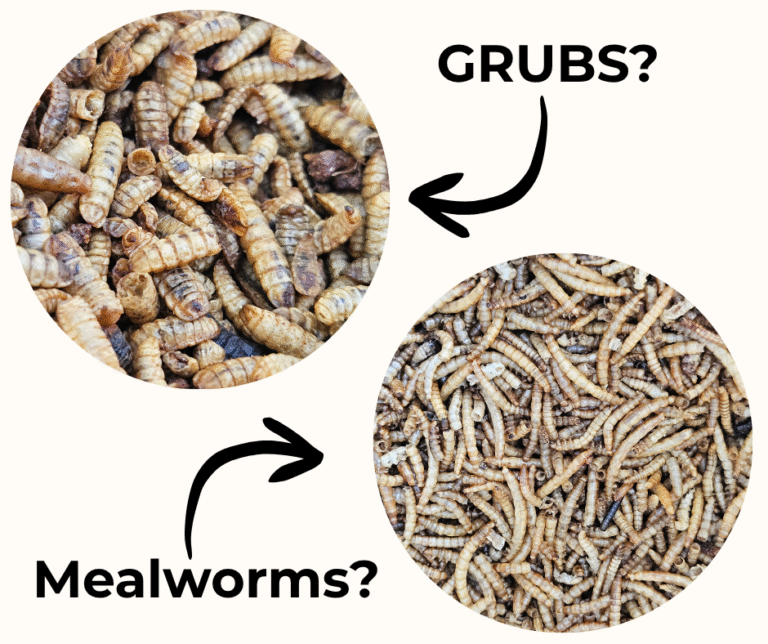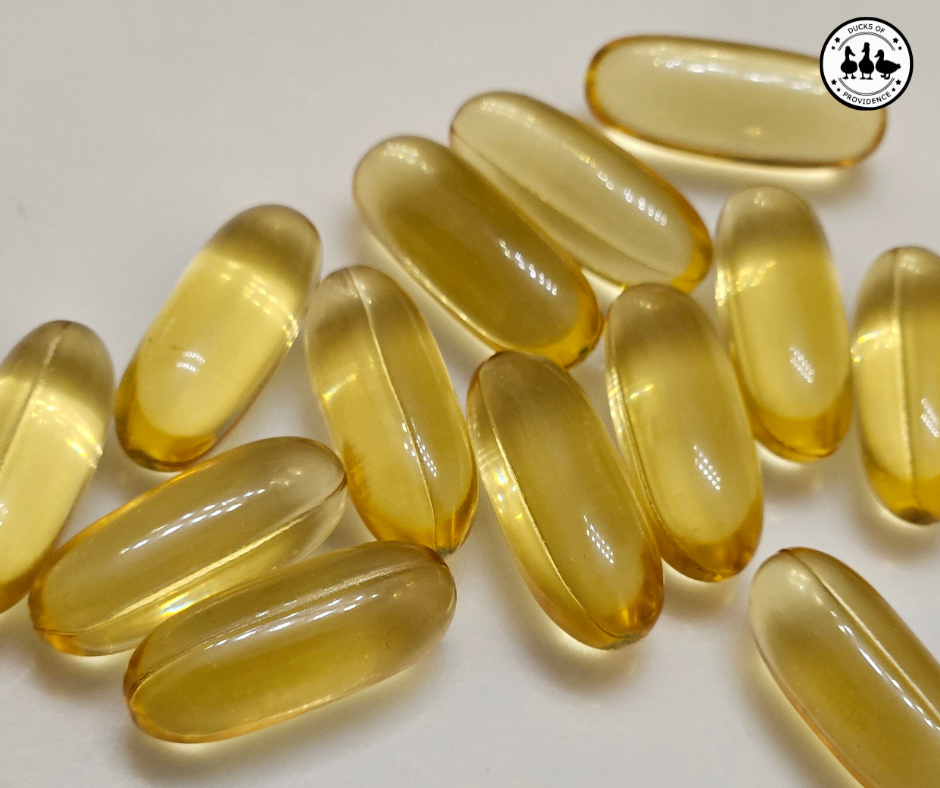
The Benefits Of Omega-3 and Omega-6 for Ducks
Last updated on March 9th, 2025 at 06:54 pm
Today, we’re exploring the world of omega-3 and omega-6 fatty acids and discovering how these essential nutrients can benefit your ducks. Whether you’re a seasoned duck keeper or just starting your quacking adventure, understanding the importance of omega-3 and omega-6 in your ducks’ diet can make a significant difference in their health and happiness.
Ducks of Providence is free, thanks to reader support! Ads and affiliate links help us cover costs—if you shop through our links, we may earn a small commission at no extra cost to you. Thanks for helping keep our content free and our ducks happy! 🦆 Learn more
What Are Omega-3 Fatty Acids?
Omega-3 fatty acids are a type of polyunsaturated fat essential for maintaining overall health in both humans and animals. There are three main types of omega-3s:
- ALA (Alpha-Linolenic Acid): Found primarily in plant oils such as flaxseed, chia seeds, and walnuts.
- EPA (Eicosapentaenoic Acid): Commonly found in marine oils like fish oil and algae oil.
- DHA (Docosahexaenoic Acid): Also abundant in marine oils, DHA is crucial for brain health and development.
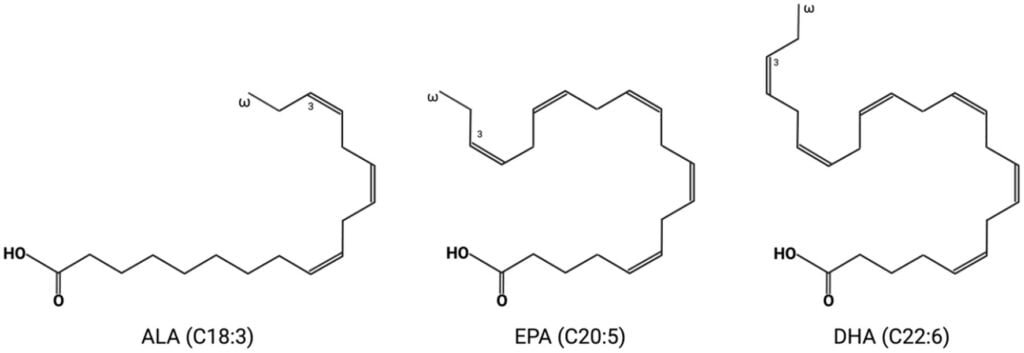
These fatty acids are termed “essential” because the body cannot synthesize them from scratch. Instead, they must be obtained through diet. Omega-3s are crucial components of cell membranes and play a role in anti-inflammatory processes and overall cellular function.
The Science Behind Omega-3 Fatty Acids
Omega-3 fatty acids are integral to many physiological processes in ducks. Here’s a closer look at how they work:
- Cell Membrane Integrity: Omega-3s are a fundamental part of cell membranes, affecting their fluidity and flexibility. This is important for the proper functioning of cells and their communication.
- Anti-Inflammatory Effects: These fatty acids are precursors to molecules known as eicosanoids, which have powerful anti-inflammatory properties. This helps reduce inflammation in the body, promoting overall health and reducing the risk of chronic diseases.
- Brain Function and Development: DHA, in particular, is a major structural component of the brain. It supports neural development and cognitive function, making it crucial for both young and adult ducks.
- Cardiovascular Health: Omega-3s help maintain cardiovascular health by reducing triglycerides, lowering blood pressure, and preventing the formation of arterial plaque. This can lead to better heart health and circulation in ducks.
Benefits of Omega-3 for Ducks
- Improved Feather Quality: Omega-3s contribute to healthier, shinier feathers. Ducks with a diet rich in these fatty acids are often seen with vibrant, well-maintained plumage. Healthy feathers are not just for aesthetics; they play a crucial role in insulation, waterproofing, and flight.
- Enhanced Immune System: A strong immune system helps ducks fend off illnesses and infections. Omega-3s support immune function by enhancing the activity of white blood cells, making your ducks more resilient to diseases and reducing the frequency of sickness.
- Better Brain Health: Just like in humans, omega-3s aid in brain development and cognitive function in ducks. This is especially important for young ducklings as they grow and learn. Ducks with adequate omega-3 intake are likely to exhibit better problem-solving skills and improved learning behaviors.
- Joint and Heart Health: Omega-3s help reduce inflammation, promoting joint health and cardiovascular function. This is particularly beneficial for older ducks or those with mobility issues. Ducks with healthy joints are more active and happier, while good cardiovascular health ensures they have the stamina for their daily activities.
- Enhanced Reproductive Health: Omega-3s have been shown to improve reproductive health in birds. Ducks with a diet rich in these fatty acids may experience better fertility rates, healthier eggs, and more robust ducklings. This is particularly important for breeders aiming to maintain a healthy flock.
- Reduced Stress and Anxiety: Omega-3s can also help in reducing stress and anxiety levels in ducks. A calm and stress-free duck is generally healthier and more sociable, contributing to a harmonious flock environment.
Sources of Omega-3 for Ducks
- Flaxseeds: Ground flaxseeds are an excellent source of ALA. You can sprinkle them into your ducks’ feed for an easy nutrient boost. We have tested the Layena Plus Omega-3 product to determine how much flaxseed can be added without altering the flavor of the egg.
- Chia Seeds: Chia seeds are another great source of ALA. To make them more digestible, soak them in water before adding them to your ducks’ food.
- Fish Oil: Adding a small amount of fish oil to your ducks’ diet can provide a concentrated source of EPA and DHA. However, be cautious with fish oil. Omega-3 fatty acids can give the egg a fish flavor. When using fish oil to increase the Omega-3 content of the diet, the maximum amount added is around 2% of the total diet. If you are going to add the oil to the feed, do so sparingly. If the eggs start to taste different, then back off the amount of oil being added.
- Leafy Greens: Ducks love leafy greens like kale and spinach, which also contain omega-3s. Including these in their diet can be a tasty and nutritious treat.
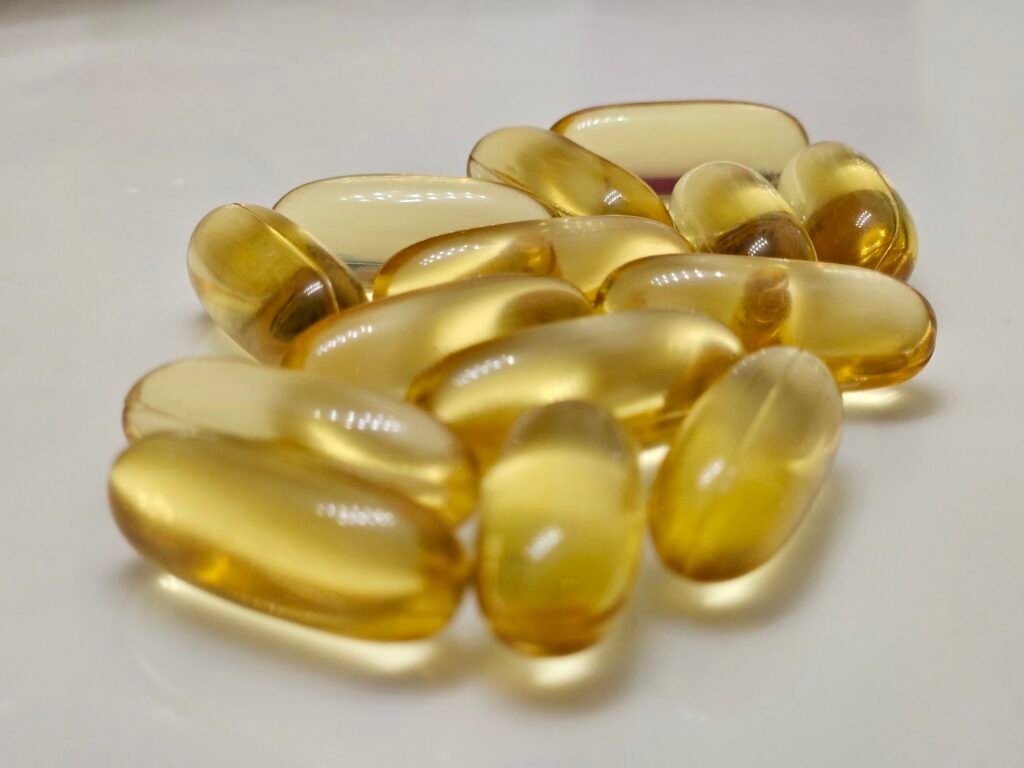
How to Incorporate Omega-3 into Your Ducks’ Diet
- Balanced Diet: Ensure your ducks have a well-balanced diet that includes grains, vegetables, and protein sources. This will help them get a variety of nutrients, including omega-3s.
- Supplement Wisely: While supplements like flaxseed or fish oil can be beneficial, it’s important not to overdo it. Too much of a good thing can sometimes lead to imbalances, so moderation is key.
- Monitor and Adjust: Keep an eye on your ducks’ health and behavior. If you notice improvements in their feather quality, energy levels, or overall well-being, you know you’re on the right track!
What Are Omega-6 Fatty Acids?
Omega-6 fatty acids are a type of polyunsaturated fat that, like omega-3s, are essential for overall health. They are called “essential” because the body cannot produce them on its own, meaning they must be obtained through diet. The most common omega-6 fatty acid is linoleic acid (LA), which can be converted in the body to other important omega-6 fatty acids, such as arachidonic acid (AA).
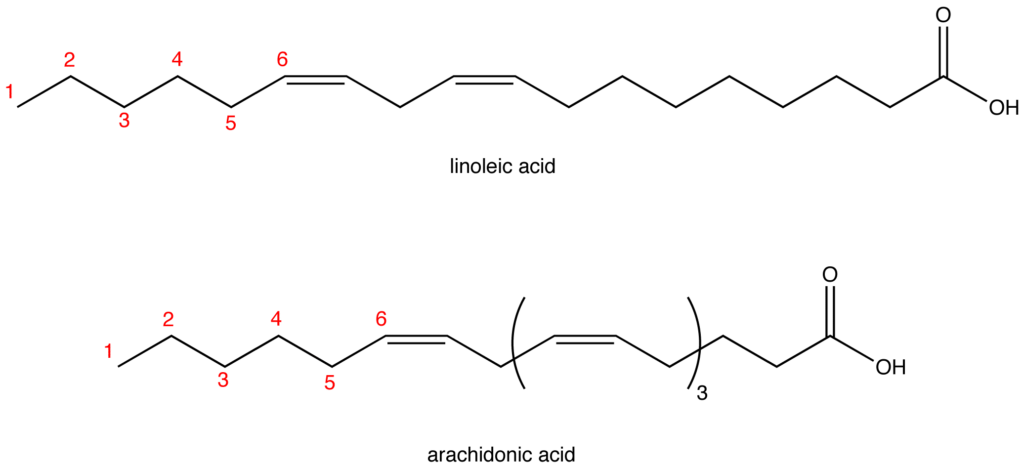
The Role of Omega-6 Fatty Acids in Ducks
Omega-6 fatty acids are crucial for several bodily functions of ducks, including:
- Cell Structure and Function: Omega-6 fatty acids are important components of cell membranes, contributing to the structure and flexibility of cells. They help maintain the integrity of cell membranes, ensuring proper function and communication between cells.
- Energy Production: These fatty acids are a significant source of energy, providing fuel for various bodily processes and activities. They play a role in energy metabolism, supporting overall vitality and activity levels.
- Inflammatory Response: Omega-6s are involved in the body’s inflammatory response. While inflammation is a natural and necessary part of the immune response, an imbalance with omega-3s can lead to excessive inflammation. Proper balance is key to ensuring that inflammation remains controlled and beneficial.
- Skin and Coat Health: Omega-6 fatty acids contribute to healthy skin and coat. They help maintain skin hydration, elasticity, and barrier function, leading to a shiny and healthy coat in ducks and other animals.
- Reproductive Health: These fatty acids support reproductive health by aiding in the production of hormones and the maintenance of reproductive tissues. They are essential for the proper development and function of reproductive organs.
Sources of Omega-6 Fatty Acids for Ducks
To ensure your ducks get enough omega-6 fatty acids, include these sources in their diet:
- Seeds:
- Sunflower Seeds: Rich in linoleic acid, sunflower seeds are a great addition to your ducks’ diet. They provide essential fatty acids and other nutrients.
- Pumpkin Seeds: Also high in omega-6s, pumpkin seeds can be a tasty and nutritious treat for ducks.
- Nuts:
- Walnuts: Walnuts are a good source of omega-6s and can be given to ducks in moderation. They are nutrient-dense and offer a range of health benefits.
- Vegetable Oils:
- Corn Oil: Corn oil is a common source of omega-6 fatty acids, and it can be added to your ducks’ feed in small amounts. It is important to balance with omega-3 sources to avoid excessive intake.
- Soybean Oil: Another rich source of linoleic acid, soybean oil is often used in animal feed for its omega-6 content.

Balancing Omega-3 and Omega-6 Fatty Acids
While both omega-3 and omega-6 fatty acids are essential, maintaining a proper balance between them is crucial. An excess of omega-6s relative to omega-3s can promote inflammation and other health issues. The ideal ratio of omega-6 to omega-3 fatty acids varies but is generally recommended to be between 2:1 and 4:1.
Tips for Achieving Balance between Omega 3 and 6
- Diverse Diet: Provide a balanced diet that includes a variety of foods rich in both omega-3 and omega-6 fatty acids. This helps ensure that your ducks receive a well-rounded nutritional profile.
- Supplement Wisely: If supplementing with oils or other sources, be mindful of the quantities to avoid overloading on omega-6s. Monitor your ducks’ health and adjust as needed to maintain balance.
- Monitor Health: Regularly observe your ducks for signs of inflammation, poor feather quality, or other health issues. Adjust their diet accordingly to promote optimal health and well-being.
By understanding and balancing omega-6 and omega-3 fatty acids in your ducks’ diet, you can help ensure they lead healthy, vibrant lives. Your feathered friends will benefit from the improved health and vitality that come with a well-balanced diet. Have you tried adjusting your ducks’ diet to improve their omega-3 and omega-6 balance? Share your experiences in the comments below, and let’s keep the conversation going!
Omega Mix: A Superfood for Your Ducks
We love to use the Omega Mix from GrubblyFarms. It is an easy way to enrich our flock’s daily diet with an omega-rich supplement that can be used as a feed topper or treat. Packed with ingredients proven to increase Omega-3 content in eggs, Omega Mix combines chia, flaxseeds, and sunflower seeds to provide an outstanding omega-3:6 ratio. Added marigolds contribute to rich, golden yolks, while black soldier fly grubs offer a boost of protein and calcium. Your flock will love their healthy new snack, and you’ll love their healthy eggs. P.S.: New Customers get 30% off their first order; no coupon code is needed!
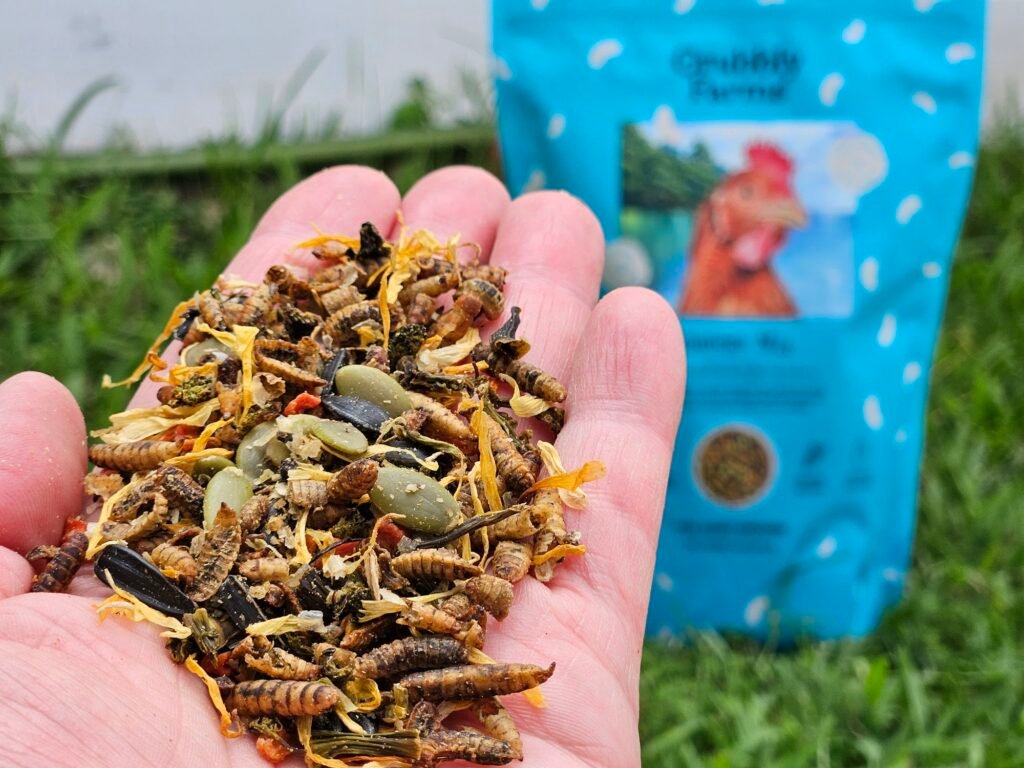
The Difference Between Omega-3 and Omega-6 Fatty Acids
Omega-3 and omega-6 fatty acids are essential fats that play crucial roles in the health of both humans and animals, including our beloved ducks. Despite being similar in their importance, these fatty acids have distinct functions and sources. Understanding the differences between omega-3 and omega-6 fatty acids can help you ensure your ducks get a balanced and nutritious diet.
Chemical Structure
The primary difference between omega-3 and omega-6 fatty acids lies in their chemical structure. Both are polyunsaturated fats, meaning they contain more than one double bond in their carbon chain. The position of the first double bond from the end of the carbon chain is what differentiates them:
- Omega-3 Fatty Acids: The first double bond is located at the third carbon atom from the end of the chain.
- Omega-6 Fatty Acids: The first double bond is located at the sixth carbon atom from the end of the chain.
Sources
The sources of omega-3 and omega-6 fatty acids are quite different:
Omega-3 Fatty Acids:
- ALA (Alpha-Linolenic Acid):
- Found in flaxseeds, chia seeds, walnuts, and leafy greens.
- EPA (Eicosapentaenoic Acid):
- Found in marine oils, such as fish oil and algae oil.
- DHA (Docosahexaenoic Acid):
- It is also found in marine oils, and it is important for brain health and development.
Omega-6 Fatty Acids:
- LA (Linoleic Acid):
- Found in vegetable oils like corn oil, soybean oil, and sunflower oil.
- AA (Arachidonic Acid):
- Found in meat, poultry, and eggs.
Functions
Omega-3 Fatty Acids:
- Anti-Inflammatory Properties:
- Omega-3s, especially EPA and DHA, produce anti-inflammatory molecules, helping to reduce inflammation in the body.
- Brain Health:
- DHA is a major component of brain tissue and is crucial for cognitive function and neural development.
- Cardiovascular Health:
- Omega-3s help lower triglycerides, reduce blood pressure, and prevent arterial plaque formation.
Omega-6 Fatty Acids:
- Pro-Inflammatory and Anti-Inflammatory Roles:
- Omega-6s can produce both pro-inflammatory and anti-inflammatory molecules, playing a role in immune response and inflammation control.
- Skin and Coat Health:
- Omega-6s are essential for maintaining healthy skin and a shiny coat by supporting cell membrane integrity and hydration.
- Energy Production:
- Omega-6s are an important source of energy for various bodily processes.
Health Impacts and Balance: While both omega-3 and omega-6 fatty acids are essential, their balance in the diet is crucial for optimal health.

Ideal Ratio of Omega-3 to 6
- Balanced Intake: The ideal ratio of omega-6 to omega-3 fatty acids is generally recommended to be between 2:1 and 4:1. This balance ensures that the anti-inflammatory effects of omega-3s and the pro-inflammatory/anti-inflammatory balance of omega-6s are maintained.
- Modern Diet Imbalance: Many modern diets, especially those of commercial animal feeds, contain an excessive amount of omega-6s compared to omega-3s. This imbalance can lead to chronic inflammation and other health issues.
Effects of Imbalance
- Excess Omega-6: An excessive amount of omega-6 fatty acids can promote inflammation, which might contribute to chronic health issues such as arthritis and cardiovascular diseases.
- Insufficient Omega-3: A lack of omega-3s can lead to poor feather quality, reduced cognitive function, and compromised immune health in ducks.
Understanding the differences between omega-3 and omega-6 fatty acids is key to providing a balanced and nutritious diet for your ducks. By incorporating a variety of sources and maintaining the right balance, you can ensure your feathered friends enjoy optimal health and well-being.
Omega-3 and Omega-6 Sources During Free Ranging
Free-ranging is a fantastic way for ducks to access a diverse diet rich in natural nutrients, including omega-3 and omega-6 fatty acids. Let’s explore some of the best sources your ducks can find while foraging in the yard or on the pasture.
Omega-3 Sources:
- Green Leafy Vegetables:
- Dandelion Greens: Often found growing in lawns and pastures, dandelion greens are a great source of ALA (alpha-linolenic acid), a type of omega-3 fatty acid.
- Clover: Common in many fields and pastures, clover provides a good amount of omega-3s and is readily consumed by ducks.
- Wild Plants and Weeds:
- Purslane: This succulent plant is rich in omega-3s and often grows in gardens and disturbed soil areas. Ducks love to nibble on its leaves and stems.
- Algae: If you have a pond or wetland area, algae can be a natural source of omega-3s. Ducks often forage for algae along the water’s edge.
- Insects:
- Mosquito Larvae: Found in standing water, mosquito larvae are a natural part of a duck’s diet and contain omega-3s.
- Aquatic Insects: Various aquatic insects in ponds and streams can provide ducks with omega-3s.

Omega-6 Sources:
- Seeds:
- Sunflower Seeds: While ducks might not find sunflower seeds naturally if you grow sunflowers in your garden, the seeds can be a tasty and nutritious snack rich in omega-6s.
- Grain Plants: Wild grasses and grains can also be a source of omega-6 fatty acids.
- Nuts:
- Acorns: Ducks may find acorns in wooded areas. These nuts contain omega-6 fatty acids and can be a seasonal treat.
- Insects:
- Beetles and Grasshoppers: Common in many outdoor environments, beetles and grasshoppers are good sources of omega-6s.
- Ants: Ducks love to forage for ants, which can contribute to their omega-6 intake.
Balancing Omega-3 and Omega-6 Intake:
- Diverse Foraging:
- Encourage a diverse foraging environment by planting a variety of plants rich in omega-3 and omega-6 fatty acids. This will ensure your ducks have access to a balanced diet.
- Supplementing When Necessary:
- If you notice that your ducks are getting more omega-6 from seeds and grains, you can supplement their diet with omega-3-rich foods like flaxseeds or chia seeds to maintain a healthy balance.
- Monitoring Health:
- Regularly observe your ducks for signs of health issues related to fatty acid imbalances, such as poor feather quality or signs of inflammation. Adjust their diet accordingly to ensure they are getting the right nutrients.
Conclusion
Incorporating omega-3 and 6 fatty acids into your ducks’ diet can have a quackingly positive impact on their health. From shinier feathers to a stronger immune system, these essential nutrients play a vital role in keeping your feathered friends happy and thriving. The Omega Mix from GrubblyFarms is a great way to supplement your ducks with these fatty acids without the risk of having your eggs taste like fish.
Free-ranging offers ducks a natural way to balance their intake of omega-3 and omega-6 fatty acids. By providing a diverse environment with a variety of plants and insects, you can help ensure your ducks enjoy a healthy, well-rounded diet.
Do you have any favorite plants or insects your ducks love to forage for? Share your tips and experiences in the comments below!
Learn More about healthy Duck food:
✅ Commercial Duck Feed Comparison
✅ The Ultimate Guide to Healthy Duck Snacks: Treats Your Ducks Will Love
✅ Feeding Ducks: A Guide to Keeping Your Flock Happy and Healthy
✅ Grit for Ducks – Do they really need it? An Essential Guide
✅ The Importance of Niacin for Ducks: What Every Duck Keeper Should Know



